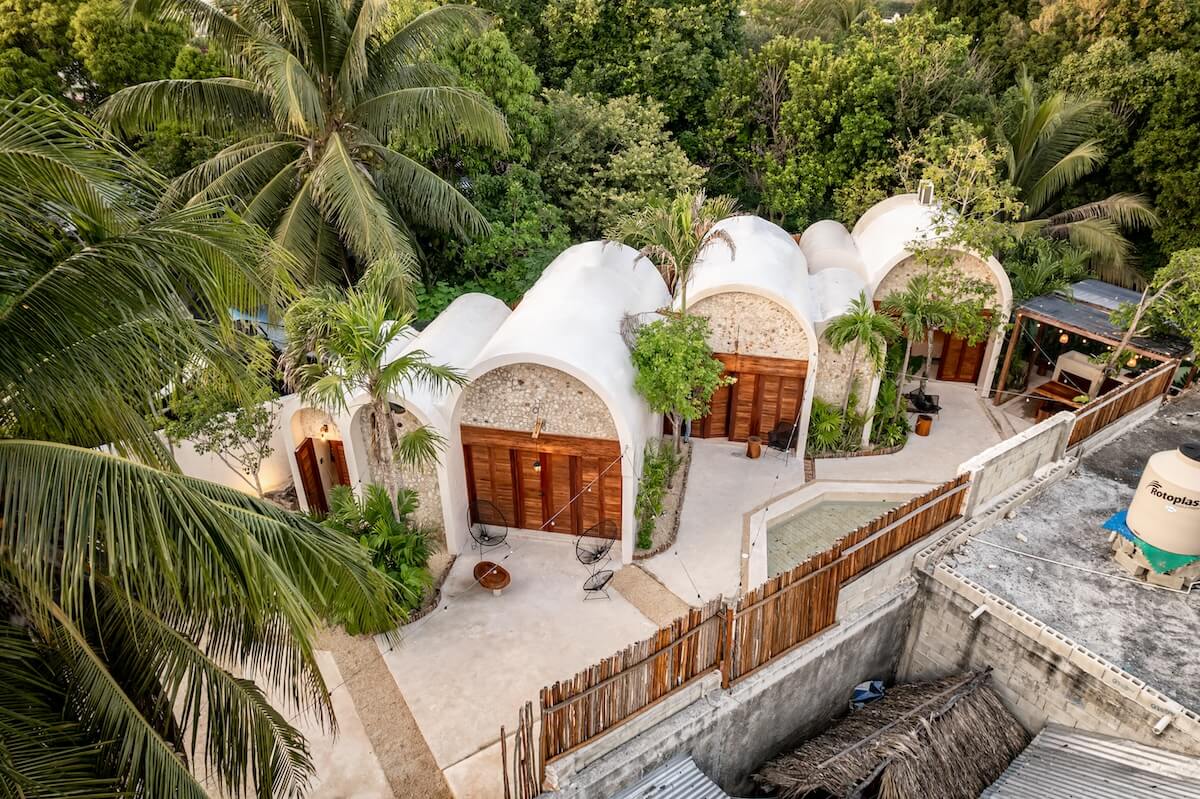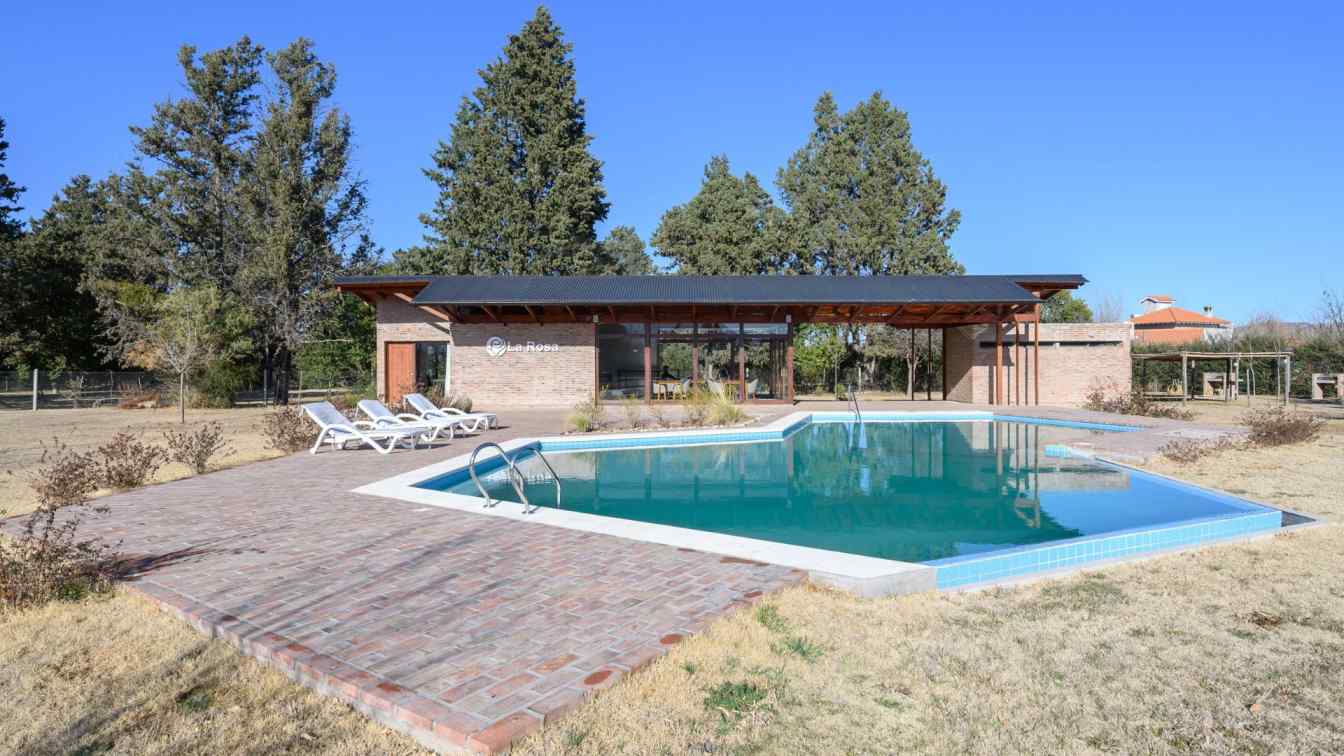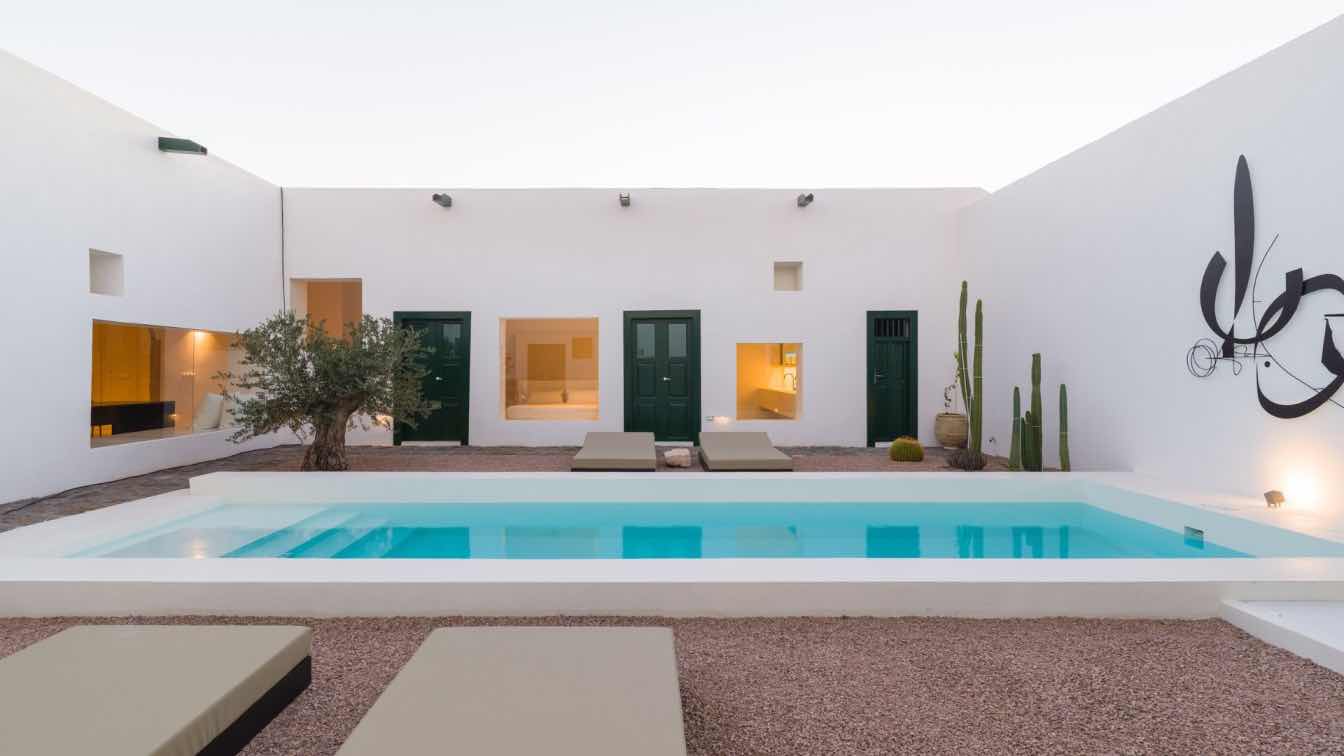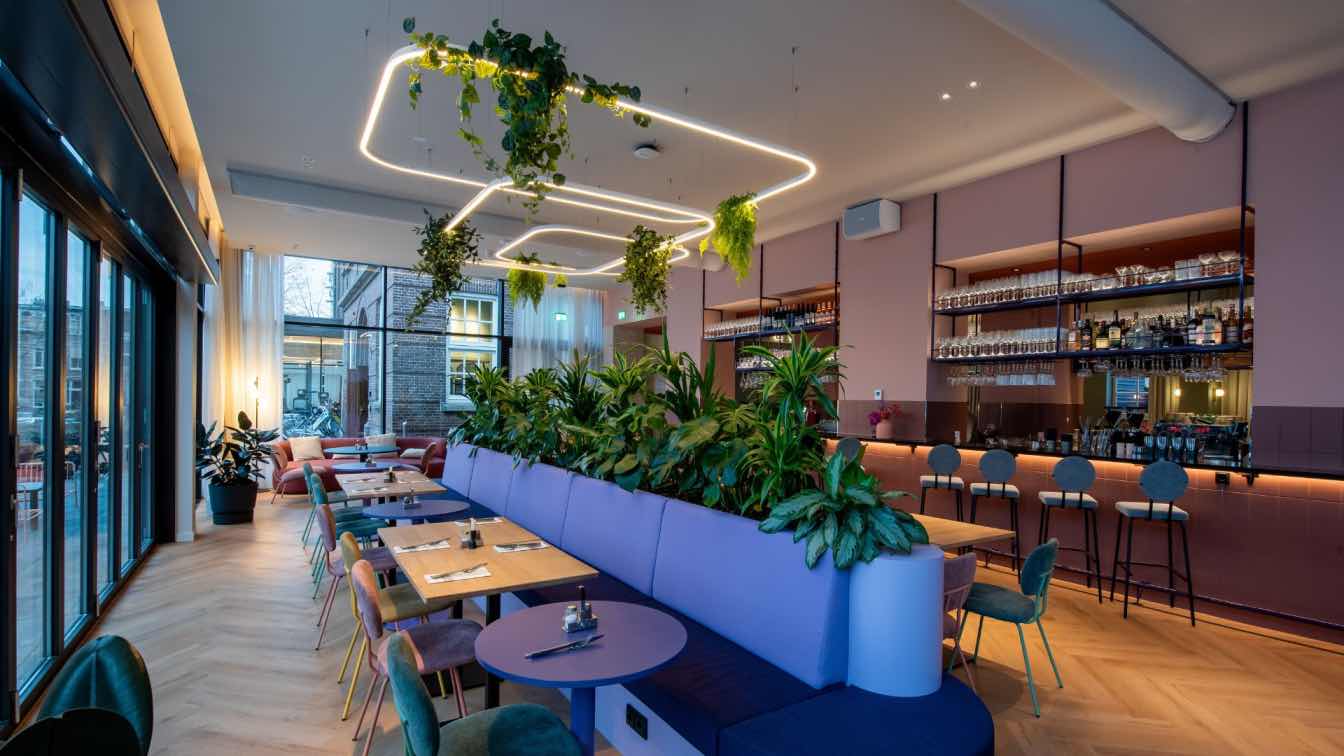Rumi Estudio Arquitectónico: Casitas Nohiyari is a boutique hotel located in Bacalar, Quintana Roo, it is formally distinguished by adopting vaulted slabs that generate striking and fresh spaces. The hotel was conceived and inspired by the name that was the result of work in collaboration with the graphic design studio Haku, responsible for the graphic identity and the brand that established the aesthetic values that were translated into spaces that provide privacy and comfort to its guests. The architectural plan distributes the areas in a functional way giving privacy to the rooms and providing private outdoor garden areas for each room.
The hotel has the following amenities: a swimming channel, wading area, kitchen area, dining room, shower area, white wine cellar, machine room, green areas and terraces that can be used by visitors for moments of recreation. In terms of finishes, the project uses the well-known Chukum, exposed stone walls, washed concrete floors in natural and neutral tones that contrast with the design of the pool floors, rooms and bathrooms made with concrete tiles in vivid colors with the design of the identity of the place.

















































































































































